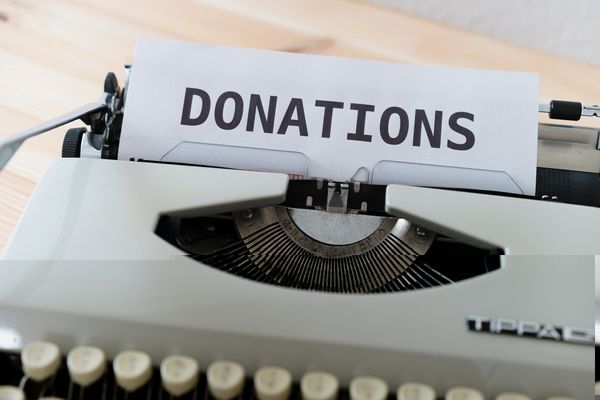Charity Scams: How to Spot and Avoid Fake Charities

Charity scams can range from simple to highly sophisticated. In straightforward schemes, individuals might pose as street fundraisers for a legitimate charity, soliciting donations from unsuspecting passersby. Others may pretend to participate in a charitable challenge, collecting sponsorships under false pretenses. More complex scams involve creating entirely fake charities with professional-looking websites and marketing materials. These fraudsters pocket all proceeds from their deceptive fundraising efforts.
Criminals frequently exploit the public's goodwill during international crises or natural disasters, setting up bogus charities to solicit donations. Their primary goals are to obtain money and personal information, which can be used for further exploitation through identity theft.
These fake charity promoters use various methods to reach potential victims, including emails, fake websites, and caller ID spoofing to impersonate legitimate charities.
Scammers are skilled at manipulating emotions and know that tugging on heartstrings is an effective way to elicit donations. They misappropriate funds or divert charitable contributions into their own pockets, betraying the trust of generous donors.
Did you know?
- According to the Donor Trust Report 2023, 70% of survey participants say that trusting a charity before donating is essential, but only 20% reported having a high level of trust in charities.
- In December 2022, the most trusted charity categories were: veterans organization (28%), non-profit hospitals (27%), religious organizations (26%), animal welfare organizations(26%), and social service charities (25%) such as homeless shelters, family counseling centers, and services for the elderly.
- In 2020, Americans lost $4.4 million to charity fraud, not including money lost to fake online fundraisers.
- UK Fraudsters diverted more than £2.7m from charities in the last year, according to Action Fraud, and there were 501 charity fraud crime reports between 1 November 2022 and 31 October 2023.
How a Charity Scam Works
Charity scams often exploit the emotional responses of potential donors, preying on their desire to help during times of crisis or need. Here's a typical breakdown of how these scams operate:
- Scammers set up fake websites or social media profiles that mimic legitimate charities. To appear credible, they use professional-looking graphics, stolen logos, and convincing stories.
- They may contact individuals through email, text messages, fake social media accounts, and GoFundMe campaigns. They might also hire telemarketing companies to ask for donations. They could take advantage of current events like natural disasters, pandemics, or personal tragedies to elicit sympathy and a sense of urgency.
- If you choose to participate and make a donation, you may be asked to provide personal information such as your name, home address, phone number, email, or your Social Security number (SSN). If you hesitate, the scammers may falsely insist that they require this information for tax benefits or other purposes.
- Once scammers receive donations, they not only keep the money but may also misuse the donor's personal information for further fraudulent activities, such as identity theft.
9 Most Common Types of Charity Scams
1. Disaster Relief Scams: After natural disasters like hurricanes, earthquakes, or wildfires, scammers create fake relief organizations to exploit public eagerness to help affected communities. They set up websites and social media pages and even make phone calls asking for donations, but the money never reaches those in need. Instead, it goes straight into the scammers' pockets.
Related: Severe Weather, Severe Scams: Surviving Post-Disaster Fraud
2. Veteran, Military, Firefighter, and Police Scams. Scammers take advantage of public support for veterans, military personnel, firefighters, and police officers by creating fake organizations to solicit donations under false pretenses. They often use official-sounding names and emotional appeals, making it hard for donors to recognize the fraud.
Related: How to identify military romance scams. Are you a potential target?
3. Animal Welfare Scams: Fake charities claiming to support animal rescue and welfare use emotional stories and images of abused or endangered animals to deceive people into donating. These scams exploit animal lovers' compassion, often providing false or no information about how the donations are used.
Related: How to Protect Yourself from Online Pet Scams
4. Health-Related Scams: During health crises like the COVID-19 pandemic, fraudsters set up fake charities to take advantage of public concern for health and safety. They may claim to be raising money for research, treatment, or support for affected individuals, but the funds are diverted for personal gain.
Related: Healthcare Scams: How to Protect Your Health and Wallet
5. International Aid Scams: Scammers create fake organizations that claim to provide international aid, targeting donors' desire to contribute to global humanitarian efforts. These scams often exploit crises in developing countries, using emotionally charged images and stories to solicit donations.
6. Impersonations of well-known charitable organizations: Criminals mimic well-known charitable organizations to divert donations intended for the real charity. They create websites and email addresses that look legitimate, making it difficult for donors to distinguish between the real and fake organizations.
7. IRS Scams: Fraudsters may pose as IRS representatives claiming to help disaster victims with tax relief, but the IRS has a specific number for disaster victims to receive free tax help. These scams often involve phishing emails or phone calls asking for personal information or immediate payment.
8. Crowdfunding and Social Media Scams: Charity fraudsters exploit social media platforms and crowdfunding websites to fabricate stories and receive donations that often never reach those in need. They may create fake profiles, share emotional stories, and use stolen images to gain sympathy and money from unsuspecting donors.
Related: Beware of these common Facebook scams before they get you
9. Holiday-themed charity scams: Around the holiday season, fraudulent charities emerge to take advantage of people's increased generosity, creating a false sense of urgency to solicit quick donations. These scams often involve fake holiday events, fundraising drives, or appeals for donations to support those in need during the festive season.
Related: How to Tell the Difference Between a Holiday Scam and a Genuine Good Deal
How to Protect Yourself from Charity Scams
- Verify Legitimacy: Before donating, research the charity to verify its legitimacy. You can use resources like CharityNavigator.org, Guidestar.org, Give.org, and TEOS to find or verify qualified, legitimate charities.
- Don't give in to pressure. Scammers often try to pressure people into making an immediate payment. Legitimate charities are happy to receive donations at any time, so donors should not feel rushed.
- Research Contact Information: Verify the charity's contact details. Look for a physical address and a working phone number, and compare these with reliable sources.
- Be Wary of Unsolicited Requests: Be cautious of unsolicited requests for donations, especially through email or social media. Scammers often use these channels to reach potential victims.
- Use Secure Payment Methods: Avoid donating via cash, gift cards, wire transfers, or payment apps like Cash App, Venmo, and Zelle. Instead, use credit cards or checks, which are more secure and can be tracked.
- Check the Website URL: Scammers often create websites with URLs similar to legitimate charities. Ensure the website you are donating through is authentic and secure (look for "https" in the URL).
- Look for Transparency: Legitimate charities are transparent about how they use donations. They provide detailed information about their programs and financials. If this information is lacking, consider it a red flag.
- Protect your personal information: Legitimate charities may ask for your contact details, but scammers may ask for sensitive information like your bank account number, date of birth, SSN, or other personal details that can be used to steal your identity. Be cautious and don't give out sensitive information to strangers, even if they claim to be working for a good cause.
- Use Bitdefender Scamio. If you suspect someone is trying to scam you, or a website looks suspicious, check it with Scamio, our AI-powered scam detection tool. Send any texts, messages, links, QR codes, or images to Scamio, which will analyze them to determine if they are part of a scam. Scamio is free and available on Facebook Messenger, WhatsApp, and your web browser. You can also help others stay safe by sharing Scamio with them in France, Germany, Spain, Italy, Romania, Australia, and the UK.
What to Do If You Gave Money to a Fake Charity
Should you find out that your donation was sent to a scammer instead of reaching an important cause or a community in need, do not hesitate to report the crime. Protect your finances and sensitive data, and assist in bringing the con artists behind fake charities to justice.
- Report the scam by submitting a report to the Federal Trade Commission (FTC) online at ReportFraud.ftc.gov. If you have given personal information to the fraudulent charity, you should also file an official identity theft report at IdentityTheft.gov.
- Monitor Your Accounts: Keep an eye on your bank and credit card statements for any unauthorized transactions. Scammers may use your payment information for further fraud.
3. Contact Law Enforcement: File a report with your local law enforcement agency. They can guide you on additional steps to take and help with any potential criminal investigation.
4. Notify the Credit Bureaus: If you suspect your personal information has been compromised, notify the major credit bureaus (Equifax, Experian, and TransUnion) and consider placing a fraud alert on your credit reports.
5. Spread Awareness: Share your experience and Scamio with friends and family on social media to help others avoid falling victim to similar scams. These scammers could also try to take money from people you know.
6. Secure your devices and online accounts by changing your passwords and enabling two-factor authentication (2FA) wherever possible.
FAQs
How can I differentiate between a legitimate charity and a scam?
Look for established charities with a history of operations. Verify their registration status and use reputable websites like BBB Wise Giving Alliance, Charity Navigator, and GuideStar to research them. Be cautious of high-pressure tactics and unsolicited requests.
What should I do if I suspect a charity is a scam?
Do not donate to the organization. Report your suspicions to the FTC, your state's charity regulator, and any platform through which you received the solicitation. Inform your friends and family to prevent further victimization.
What is an example of a fake charity?
Often, fake charities use names very similar to real, legitimate organizations. An example is an exposed fake charity called the Breast Cancer Society. While this is a phony charity, its name is very similar to a well-reputed charity called the Breast Cancer Alliance.
tags
Author
Cristina Popov is a Denmark-based content creator and small business owner who has been writing for Bitdefender since 2017, making cybersecurity feel more human and less overwhelming.
View all postsRight now Top posts
Cybercriminals Use Fake Leonardo DiCaprio Film Torrent to Spread Agent Tesla Malware
December 11, 2025
Genshin Impact Scam Alert: The Most Common Tricks Used Against Players
December 05, 2025
How Kids Get Automatically Added Into WhatsApp Groups with Horrific Imagery Without Consent
November 24, 2025
Scammers Exploit Hype Around Starbucks Bearista Cup to Steal Data and Money, Bitdefender Antispam Lab Warns
November 18, 2025
FOLLOW US ON SOCIAL MEDIA
You might also like
Bookmarks









